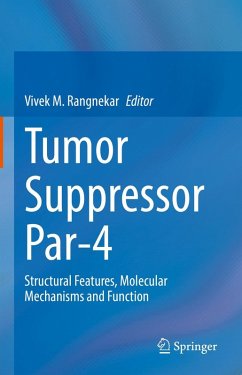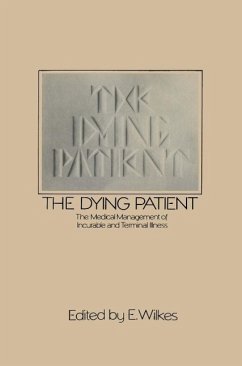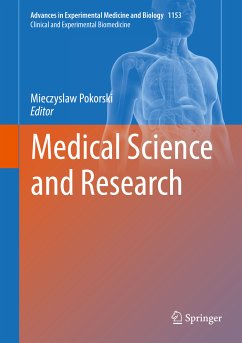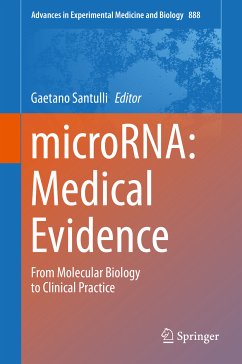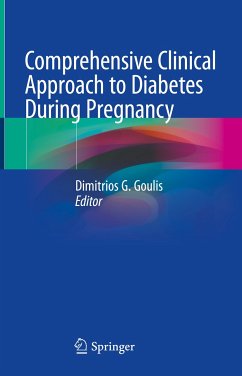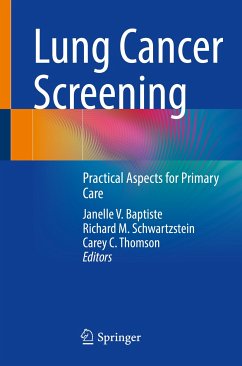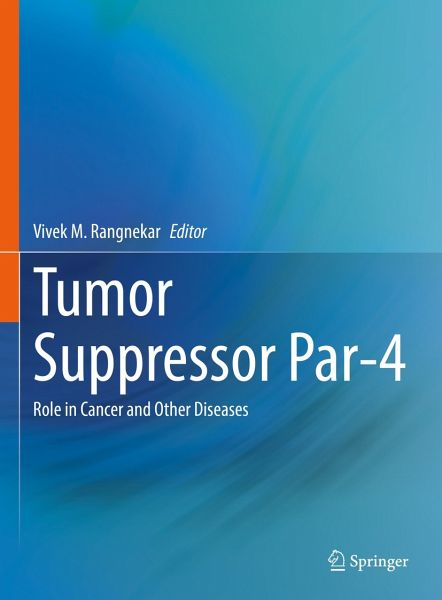
Tumor Suppressor Par-4 (eBook, PDF)
Role in Cancer and Other Diseases
Redaktion: Rangnekar, Vivek M.
Versandkostenfrei!
Sofort per Download lieferbar
136,95 €
inkl. MwSt.
Weitere Ausgaben:

PAYBACK Punkte
68 °P sammeln!
Par-4 is a naturally occurring tumor suppressor. Studies have indicated that overexpression of Par-4 selectively induces apoptosis in cancer cells while leaving normal, health, cells unaffected. Mechanisms contributing to this cancer-selective action of Par-4 have been associated with PKA activation of intracellular Par-4 in cancer cells or GRP78 expression primarily on the surface of cancer cells. On the other hand, endogenous Par-4 sensitizes cells to the action of a broad range of apoptotic inducers acting via the extrinsic and intrinsic pathways. A number of binding partners of Par-4 have ...
Par-4 is a naturally occurring tumor suppressor. Studies have indicated that overexpression of Par-4 selectively induces apoptosis in cancer cells while leaving normal, health, cells unaffected. Mechanisms contributing to this cancer-selective action of Par-4 have been associated with PKA activation of intracellular Par-4 in cancer cells or GRP78 expression primarily on the surface of cancer cells. On the other hand, endogenous Par-4 sensitizes cells to the action of a broad range of apoptotic inducers acting via the extrinsic and intrinsic pathways. A number of binding partners of Par-4 have been identified and shown to regulate Par-4 function in cancer and other diseases, such as Alzheimer's and major depression. Recent studies have recognized a number of natural products, dietary supplements, synthetic molecules and FDA-approved drugs that induce the secretion of Par-4 protein to cause apoptosis in primary or metastatic tumors, one of which is in clinical trials. More than 50 different laboratories worldwide are involved in Par-4 based research of this unique protein that has progressed from the bench to clinical trials.
This second, companion volume will provide a comprehensive overview of Par-4's role in cancer and other diseases. Chapters are written by leading researchers, and will be useful for a broad audience across the scientific community, particularly students and trainees, who are the next generation of scientists and clinicians to participate in new studies and discoveries on Par-4.
This second, companion volume will provide a comprehensive overview of Par-4's role in cancer and other diseases. Chapters are written by leading researchers, and will be useful for a broad audience across the scientific community, particularly students and trainees, who are the next generation of scientists and clinicians to participate in new studies and discoveries on Par-4.
Dieser Download kann aus rechtlichen Gründen nur mit Rechnungsadresse in A, B, BG, CY, CZ, D, DK, EW, E, FIN, F, GR, HR, H, IRL, I, LT, L, LR, M, NL, PL, P, R, S, SLO, SK ausgeliefert werden.



